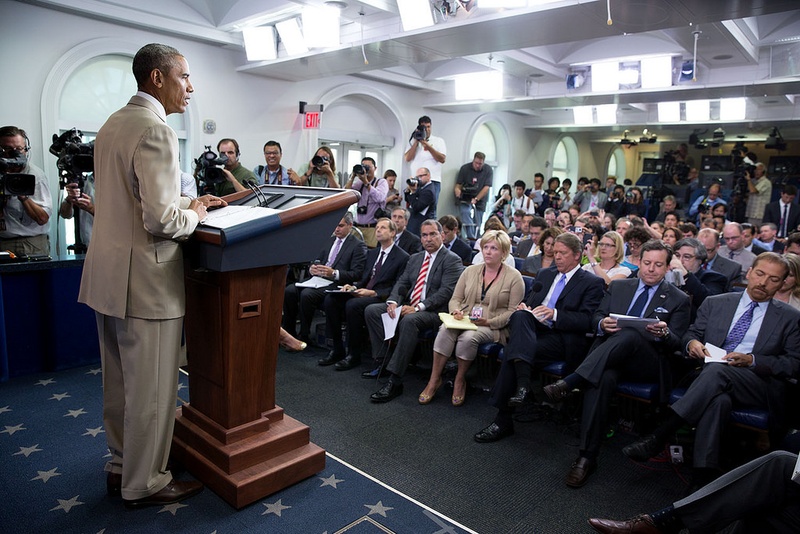Why a ninety percent commitment to openness isn’t enough

Writing on behalf of President Barack Obama in USA Today, Corinna Zarek and Melanie Pustay of the White House Office of Science and Technology Policy and the Justice Department, respectively, tout the administration’s commitment to transparency and its record on Freedom of Information Act (FOIA) requests. They note, “Agencies have released records either in full or in part for more than 90 percent of requests processed for disclosure,” while also noting there has been a “historically high demand for records over the past six years.”
Over the last six years, the Obama administration has made some strides in making government records more accessible. It’s launched websites like Data.gov, a repository of public information, Recovery.gov, which tracked stimulus spending and now follows Hurricane Sandy relief spending, and even FOIA.gov, for finding out information on, yes, FOIA requests. The administration has released a few high value datasets — the Centers for Medicare Services payment data to physicians is one notable example. Its recent decision for all federal agencies to release their Enterprise Data Inventories is also a promising step in data disclosure. It’s also taken other steps to make government more accessible to citizens, like its Public Participation Playbook, an effort to involve citizens in implementing government programs to make them more responsive.
At the same time, the Obama administration has picked up where its predecessor left off in stonewalling the media, avoiding disclosure and thwarting accountability. Take its treatment of email. In addition to Hillary Clinton’s private server, there is former Environmental Protection Agency administrator Lisa Jackson, who used the nom de pixel Richard Windsor for her email correspondence to evade FOIA requests. (In what must be some kind of record for government ineptitude, the EPA gave Richard Windsor an ethics award.) The Internal Revenue Service’s series of claims as to the disposition of Tea Party targeter Lois Lerner’s emails turned out to be no longer operative, while the president himself invoked executive privilege to shield from disclosure emails sent by Attorney General Eric Holder relevant to the Fast and Furious scandal.
Of course, it’s not just emails that the White House and its appointees have withheld from the press and public. The State Department fought in court a Freedom of Information Act request for passenger manifests for the hundreds of flights Secretary of State Hillary Clinton took around the world. Citizens United — yes, that Citizens United — requested them wanting to see who traveled with her, whether it be government officials, corporate executives seeking business deals, Washington lobbyists or donors, either to Clinton’s campaigns or her family’s nonprofit ventures. Such records are routinely available under the Freedom of Information Act, and a federal judge sided with Citizens United. Twenty years ago, the Center for Public Integrity used such records to uncover the Clinton administration’s practice of giving seats on overseas trade missions to big soft money donors.
And that’s really the key to being transparent. It’s not what an administration does with the 90 percent of requests it fulfills, it’s how it responds to requests for information about its miscues and errors, its potential wrongdoing, that counts. And that’s where the Obama administration’s promise of transparency falls short far too often.

